QuestionI just changed my under gravel filtration system, and I thought it was working great, so I bought some new fish (6 black tetras). The water now smells bad and my fish are sick and dying. I've changed 25-50% of the water twice in the 2 weeks I've had the new filtration system. PLEASE HELP! The tank is 18 gallons and I've had it about 20 years, and the old filtration system was broken and not working well when I decided to change it. In addition to the 6 tetras, I also have one older black tetra, a big goldfish, an algae eater, two small fish that are something with "Yo-Yo" in the name, and I had three red tetras, but they are the ones who died. I don't know anything about the water chemistry, except that a man at the pet store told me my problem was over feeding, which was producing too much ammonia, and he gave me something to fix that, but it didn't help (the smell was still there). I really need your help - what can I do to fix this?
AnswerHi Kenny;
You will need to make more partial water changes. Replace 25% of the water every day until the fish seem to be feeling better. Once the fish are doing better, change 25% of the water every 3 days. Be sure to use a water conditioner and don't vacuum the gravel right now. The beneficial bacteria lives in the gravel and it should not be disturbed until it is more stable. You want partial water changes for 2 reasons; 1) the fish won't experience additional shock and 2) the bacteria still have some toxins to feed on so the sytem can still continue breaking in.
Cut back on food for now too. The fish aren't feeling well from all the toxins anyway so probably aren't too hungry. It wouldn't hurt them to go without any food at all for 3 days. They will be hungry enough by then after the partial water changes have brought the toxins down a bit. When you start feeding again, only give them enough to totally finish from all areas of the tank in 5 minutes. Even if they eat it all after this 5 minute period, they can't digest it properly from being too full and it just adds excess waste to the gravel bed.
Speaking of the gravel bed, for an undergravel system to work properly there must be 2 to 3 inches of gravel on top of it. The plastic plates hold the gravel up so that oxygenated water can circulate through it and out the pipes again. The beneficial bacteria lives in the gravel, virtually covering each individual pebble. It is fed by the fish waste that circulates through with the oxygenated water. It is important that the area under the plates is hollow so this can happen.
You have quite a lot of fish for an 18 gallon. Calculate how many actual inches of fish you have in there and you will find that it is pretty well stocked, perhaps overstocked. Calculate based on the adult size each fish will get. There should be about 18 inches of total fish in your tank as a safe maximum population. Be sure and make a 25% water change while vacuuming the gravel every week to keep them healthy once this crisis is over with. This should keep everyone in good shape.
It would be best if the goldfish had his own tank. Goldfish are cold water fish and also get quite big, up to 8 inches. Being deep-bodied fish that tend to overeat you will find that the tropical tank stays cleaner without him there. They are pretty messy fellas that just need lots of room of their own. It won't be long before he starts to make snacks out of your smaller fish too. Yikes!
Here is my article on new tanks to help you know what is happening and why;
**********
New Tank Syndrome or Break-in Period
So you have a new tank and you filled it up, put the filter together, mounted the heater into place and turned on the lights. You have all the plants and decorations where you want them....
You are ready for fish.
But, your filter is not ready for a full tank of fish yet.
The filter is running and moving the water and cleaning out crud, right? Of course!
But a very important part of your filter is the part you can't see. An aquarium filter removes the larger visible stuff, but it also must remove the dissolved fish waste that turns into ammonia in the water. To do this, special bacteria must grow in the filter system and on the particles of gravel in the bottom of your tank. This process occurs even on a limited scale in little fish bowls that have no filter in them.
This is "New-Tank Syndrome" or the "Break-in Period". The entire process takes 6 to 8 weeks to complete because these "nitrifying" bacteria grow quite slowly.
Start off with only one or two hardy fish (no more than 2 total inches of fish) for every ten gallons of water and don't add more until the 6 to 8 weeks has gone by. Hard to be patient, but it is worth it to keep your fish alive and healthy. As a matter of fact, the bacteria cannot develop without fish in the tank. You can let that tank sit forever without fish in it, but as soon as the first fish goes in the process begins. Avoid changing the filter pads during break-in. This removes the bacterial colonies that are essential to a balanced aquarium. You can rinse the filter pad out in a container of aquarium water. This will preserve most of the bacteria colonies while still allowing your filter to flow freely. Even using bacteria additives and water conditioners when you first set up the tank will not make a tank begin the cycle by itself. If there are no fish to provide food (fish waste) for the bacteria, the beneficial bacteria cultures will die and you will have to start the colonies all over again once fish are added to the tank. Once the tank has completed the initial cycle, you can change the filter pads every 4 weeks or so. But for now, just rinse them.
Feed your new fish VERY lightly. Any excess food will cause additional waste your system cannot afford to have right now. If you see food floating around or lying on the plants and gravel after five minutes, too much food is going into the tank. Cut back a little each time you feed until it is ALL gone 5 minutes after you feed them. Feed them once a day.
During this "break-in period" your tank will become cloudy and milky looking. You may have to tolerate this for the entire break-in period but it is only temporary. Changing 25% of the water three times a week until the break-in period is over helps a great deal. Changing water reduces the ammonia and nitrites that rise while the bacteria continues to multiply. If ammonia and/or nitrites become too high, your fish will become stressed and possibly die. Use a good water conditioner when you replace the water and make sure it is the right temperature to avoid shocking your fish.
When the break-in is over after 6 to 8 weeks and there are no nitrites or ammonia present in the water you can slowly add more fish. Add one or two every week until you reach the desired population. This allows the bacteria to adjust to the new population every time before adding more. Monitor the nitrites and ammonia to be sure they don't come up. If they do, make a 25% water change and check them again. Don't add the next fish until the levels are down again.
The safe maximum population for any size tank is one inch of adult fish for every gallon of water in the tank. Do some research to be sure of the fish you are interested in. Even though they are small when you buy them, you have to base your population calculations on full-sized adult fish. Many hobbyists have up to two inches per gallon but this can be risky. If a water quality issue arises or a disease occurs it will spread fast and furious in an over-populated tank. In any case, 25% water changes every week to two weeks are absolutely essential for the health of your fish.
Following these guidelines will help you get your new tank on the right track.
**********
Followups Welcome
At Your Service;
Chris Robbins
Come on over and join us on the freshwater fish forum at About.com to get even more information too;
http://freshaquarium.about.com/od/questionsanswers/a/naavigateforum.htm
My member name is ChrisR62. See You There!

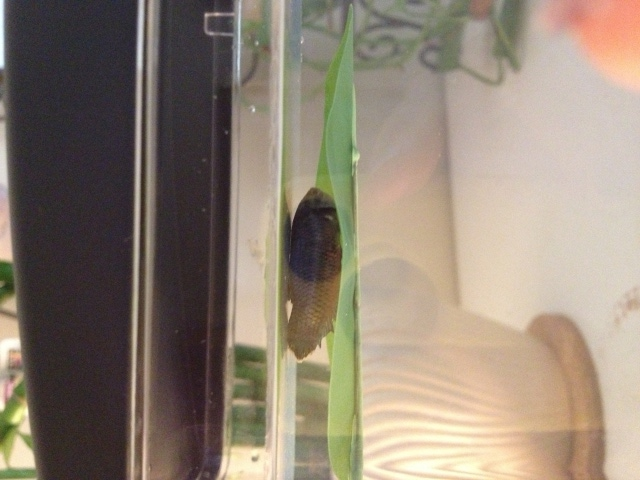 Bought Beta after had been in fight in store... Help!
Question
Nemo resting on his ha
Hello. I was in
Bought Beta after had been in fight in store... Help!
Question
Nemo resting on his ha
Hello. I was in
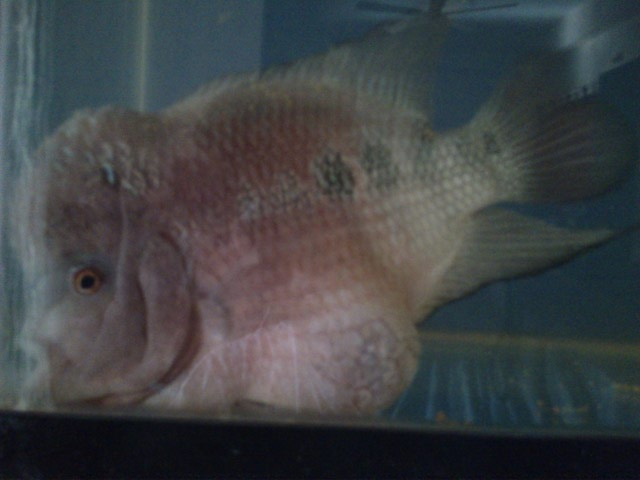 Dropsy, Bloated Stomach
Question
Flower Horn Flower Horn
Hello,
My
Dropsy, Bloated Stomach
Question
Flower Horn Flower Horn
Hello,
My
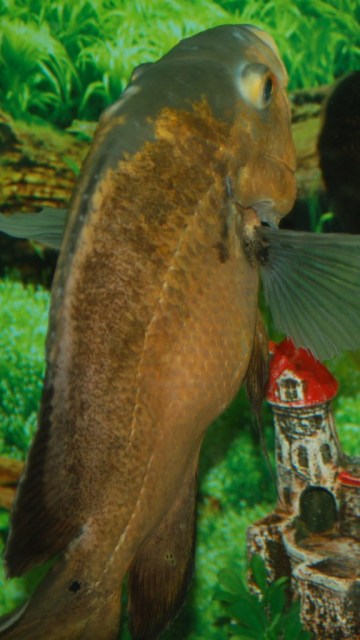 5 Year Old Female Oscar Large Lump On Each Side Trouble Breathing
Question
Here Is The Picture Of
Hello Ron.
5 Year Old Female Oscar Large Lump On Each Side Trouble Breathing
Question
Here Is The Picture Of
Hello Ron.
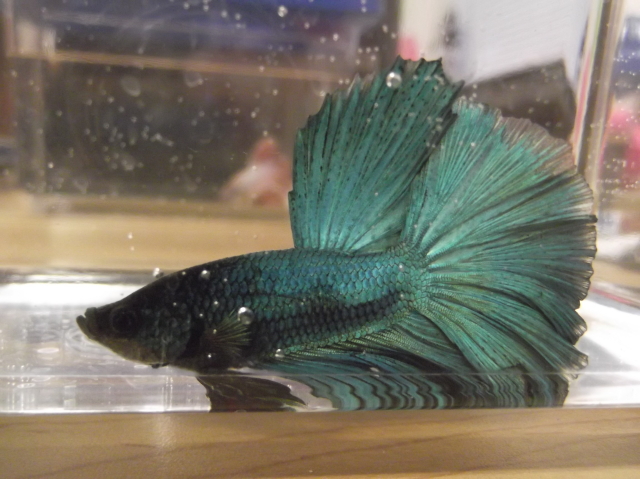 Lethargic Betta; Lack of Appetite
Question
Meris
A couple of days ago my roommate
Lethargic Betta; Lack of Appetite
Question
Meris
A couple of days ago my roommate
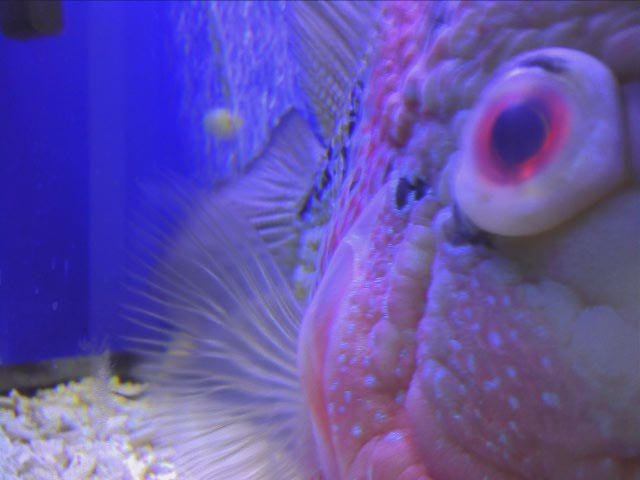 Flowerhorn Popeye
Question
Flowerhorn popeye
My 18 months old 8 fl
Flowerhorn Popeye
Question
Flowerhorn popeye
My 18 months old 8 fl